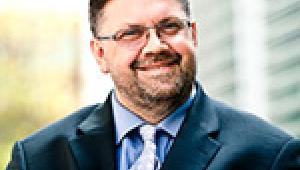The NAO said GPs are and will be increasingly under pressure as the population ages and demand for services grows. The government has made improving access a priority, calling for a fully seven-day NHS, but overstretched budgets are already hampering GP capacity.
NAO head Amyas Morse said the challenge is how to maintain people’s currently positive experience of accessing general practice against a backdrop of “increasing demand and pressure” on NHS resources.
The NAO found that almost 9 in 10 patients reported that they could get an appointment with their GP in 2014/15. But while experience of accessing general practice currently remains positive, it has been on a gradual and consistent decline, the auditors said.
Their report emphasised the importance of good access: if patients cannot access their GP their health is likely to deteriorate or they will turn to other, more expensive NHS services such as A&E departments.
A fifth of patients reported that GP opening hours are currently inconvenient and older patients were more likely to say that they were able to access appointments than younger patients.
People from a white ethnic background were also able to access appointments more easily than those from other ethnic groups, the NAO said.
While on average 92% of people live within 2km of a GP surgery, spread is starkly uneven. More than a third (37%) of people in rural areas live further from a doctor than this, compared to just 1% in urban areas, the report found.
Differences in GP practices’ working arrangements is also affecting the proportion of patients who can get an appointment, as is the ratios of doctors and nurses to patients. In deprived areas this is lower and it is therefore harder to secure an appointment.
The NAO also identified problems with recruiting and retaining GPs, with 12% of places in 2014/15 remaining unfilled. As GPs make up only 29% of the practice workforce they are unlikely to be able to deal with rising demand for services alone and practices are already using other staff to help manage demand.
In addition, the NAO said distribution of staff across the country does not reflect need. Despite NHS England’s efforts to allocate funding to local areas using weighted populations to reflect different demographics, health needs and local costs, inequalities remain.
The combined number of GPs and nurses in each local area ranges from 63 to 114 per 100,000 people, even using a weighted population.
The NAO recommends that NHS England improve the data it collects on supply and demand in general practice and research how different practice’s appointment-booking and other working arrangements can drive variations in access.
It should make changes designed to improve this, but ensure the impact of changes on different groups are analysed.
“The Department of Health and NHS England are working to improve access, but are making decisions without fully understanding either the demand for services or the capacity of the current system,” Morse said.
“Better data is needed so that decisions about how to use limited resources to best effect are well-informed.”



















